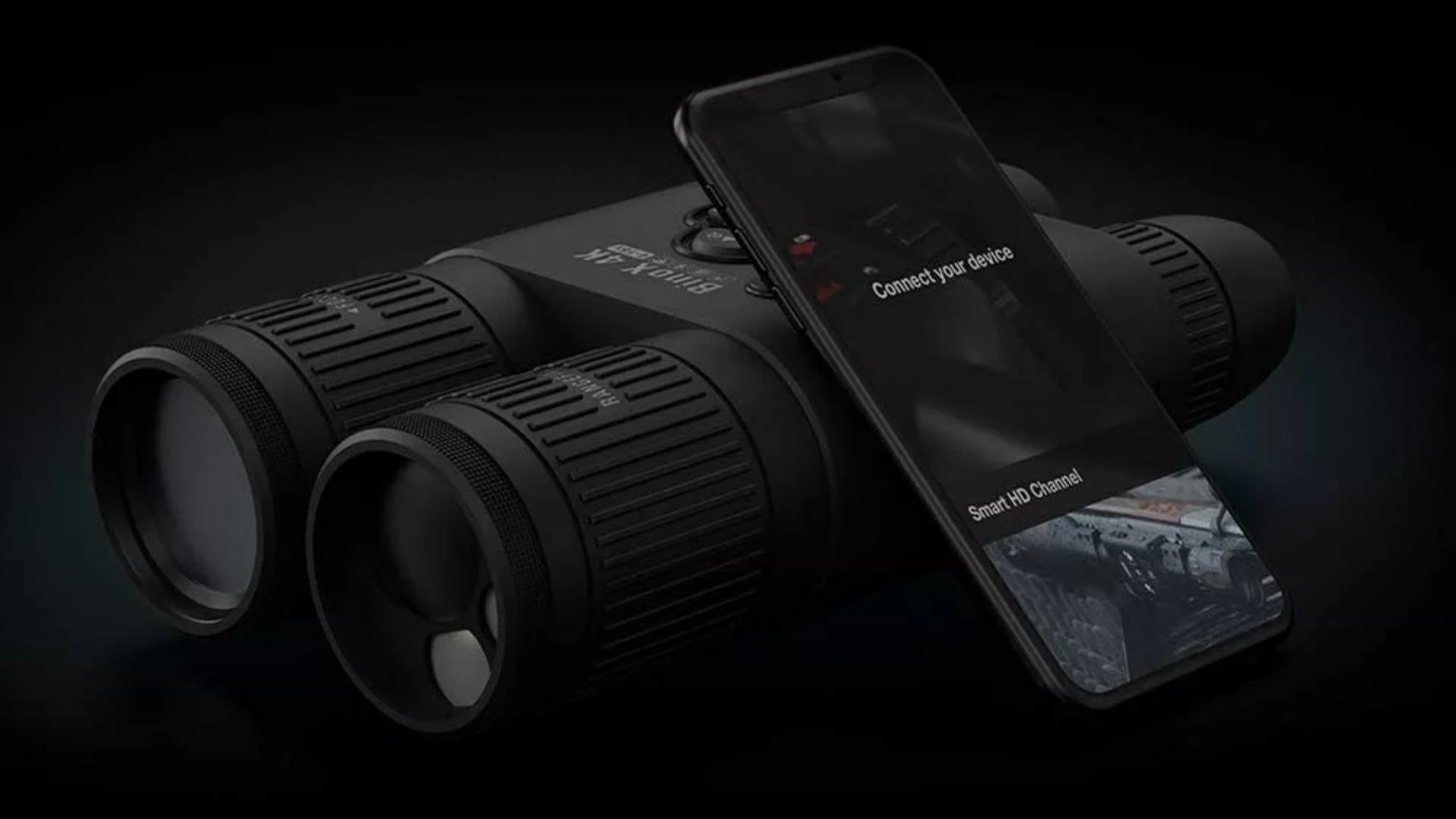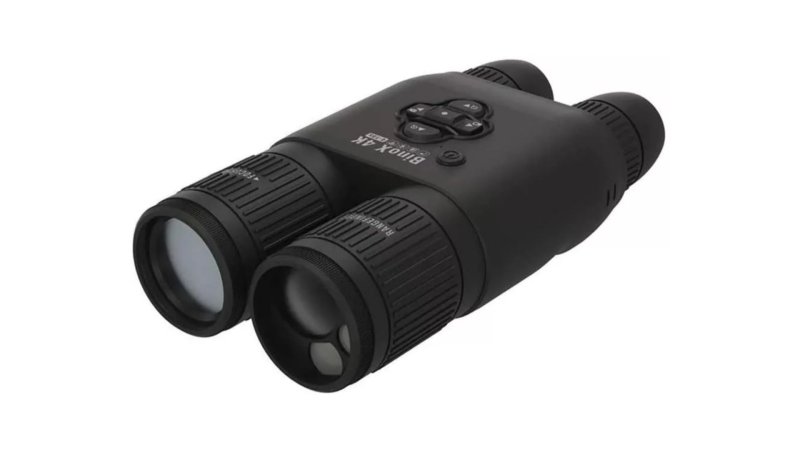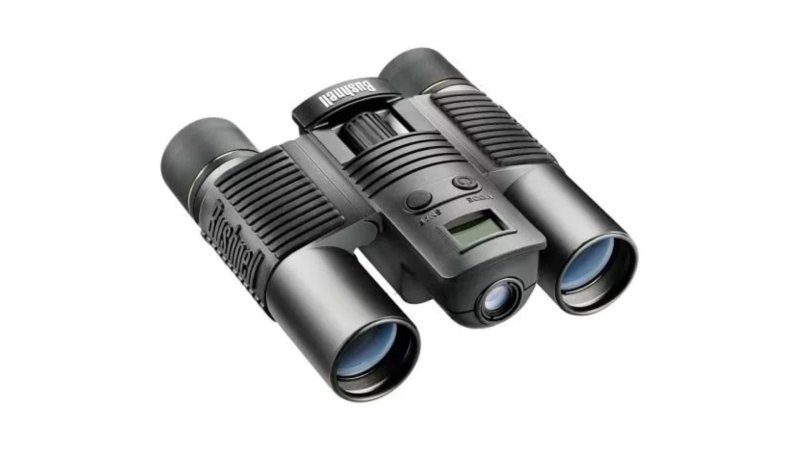

We may earn revenue from the products available on this page and participate in affiliate programs.
Binoculars with cameras are a very niche tool. As the name implies, they combine the functionality of a pair of binoculars with that of a camera. You’d use them just like you would binoculars or a camera, so for bird watching, whale watching, hunting, or spying on your neighbors.
If you understand how binoculars and cameras work, then you’re in a good position to understand how camera binoculars work. You use the binoculars to magnify a faraway image and, if you like what you see, you can take a picture or a short video.
The best binoculars with cameras are designed to function in the environments where you plan to use them and deliver good-enough image quality that you’d be proud to bore your friends with. In this article, we’ll show you the best binoculars with cameras available today, as well the qualities that make them top-tier.
- Best Overall: ATN Binox 4K
- Best Value: Bushnell ImageView Binocular
Best Overall
ATN BinoX 4K
Pros
- Maximum feature collection
- Live-streaming capability
- Laser rangefinder
Cons
- Expensive
Product Specs
- Camera: 4K Ultra HD photo and video
- Dimensions: 9.4 x 2.6 x 5 inches
- Weight: 3.43 pounds
- Materials: High-impact plastic
- Magnification: 10x
- Resolution: 4K Ultra HD
Why It Made The Cut
- The ATN BinoX 4K is a cut above everything else out there when it comes to camera binoculars. They not only offer premium features, but actually deliver them.
Best Value
Bushnell ImageView Binocular
Pros
- Reliable brand name
- Affordable price
- Onboard memory
Cons
- Limited 8x optics
- Limited memory
- No tripod attachment point
Product Specs
- Camera: ImageView 8x21mm with VGA
- Dimensions: 8 x 5.5 x 2.5 inches
- Weight: 1 pound
- Materials: High-impact textured plastic
- Magnification: 8x
- Resolution: 640 x 480 VGA
Why It Made The Cut
- Bushnell is one of the few recognizable brands that offers camera binoculars to general consumers. Although the ImageView was discontinued, it’s still widely available and very affordable.
Things to consider before buying binoculars with cameras
Since camera binoculars are two things, you should consider how they perform as both. Although it feels kinda obvious and weird to point out, it also feels necessary because it’s kind of a ridiculous combination. Nonetheless, in this section, we’ll tell you the right mix of bino and camera features to include.
Brand
If you search for camera binoculars, you’ll find a handful of options that look exactly the same — and it’s quite possible that they are. Several of the models offered by online retailers can be traced back to wholesale suppliers like Alibaba. What that means is a company can buy it in bulk, put their brand label on it, and sell it for a higher price. While several of them are highly rated on e-commerce sites, we’re not entirely comfortable with recommending them in our buyer’s guide.
Functionality
The controls on most camera binoculars are fairly intuitive. The ones to consider include image display, tripod adapter, and magnification. The first two are self-explanatory, but magnification needs some explanation.
Optical zoom
Magnification is probably the most important functional feature to note. Camera binos are equipped with either digital zoom or optical zoom. The latter is often considered superior. With optical zoom — what analog binos use — you get more control and precision.
Magnification power
The magnification power will be represented in numerical form. For example, a binocular spec sheet will include something like “8x32mm.” The “8x” is the magnification power, meaning it’ll magnify what you can see with your naked eye eight times. The “32mm” identifies the diameter of the objective lens. A larger objective lens will let you see farther away.
Image quality
In digital photography, image quality refers to the file type and image ratio used to save a picture. The image size is measured in pixels. While there are several factors to consider, in general, larger image sizes make better quality images because they capture more detail.
Memory
Most camera binoculars use the same kind of memory card as a digital camera. If they don’t, they use internal storage, which is limiting. So, if you’re serious about photography, you’ll want a large memory card and should probably buy a real camera.
Durability
Camera binoculars need to hold up against the environment you bring them in, so you should look for ratings by the International Organization for Standardization, or ISO. The most popular for field use are waterproofing, shock-proofing, and dust-proofing.
Construction materials also have a role in durability. Most binoculars with cameras are made out of polymer or metal and will have a protective rubber coating to cushion the glass if you drop it.
FAQs about camera binoculars
Q: Do I need a binocular camera?
A: No. If you’re serious about photography, you’re better off buying a digital camera.
Q: What are digital binoculars?
A: Digital binoculars — also called camera binoculars and binoculars with cameras — are binoculars with a camera sensor. They allow you to snap a photograph with the same long-range optical tools.
Q: How do I connect my smartphone or computer to my binoculars?
A: There are several ways, but it depends on the functionality of your camera binoculars. They can connect to a phone via Bluetooth or WiFi, and to a computer with a USB cable or by simply removing the memory card from the camera and inserting it into your computer.
Final thoughts
Camera binoculars are a fun novelty and it probably reached its peak a decade ago. While most of what’s available today are knockoffs of one another, they’re not that expensive, so have at it. However, if you’re serious about photography or making videos, don’t buy camera binoculars —buy a digital camera, instead. But if you’re absolutely set on buying one, go for the best and get an ATN BinoX. It has all the features you need including 4K images, night vision, and smartphone compatibility.
Methodology
For this article, we looked at everything available online about camera binoculars from Youtube videos to listicles. We also read through separate guides on binocular and camera technology. We used sources like REI, OpticsPlanet, and Wild Bird Watching. When researching individual products, we relied on user reviews published on e-commerce pages, independent blogs, and social media channels, as well. Learn more about our process by checking out the Task & Purpose review guidelines.

